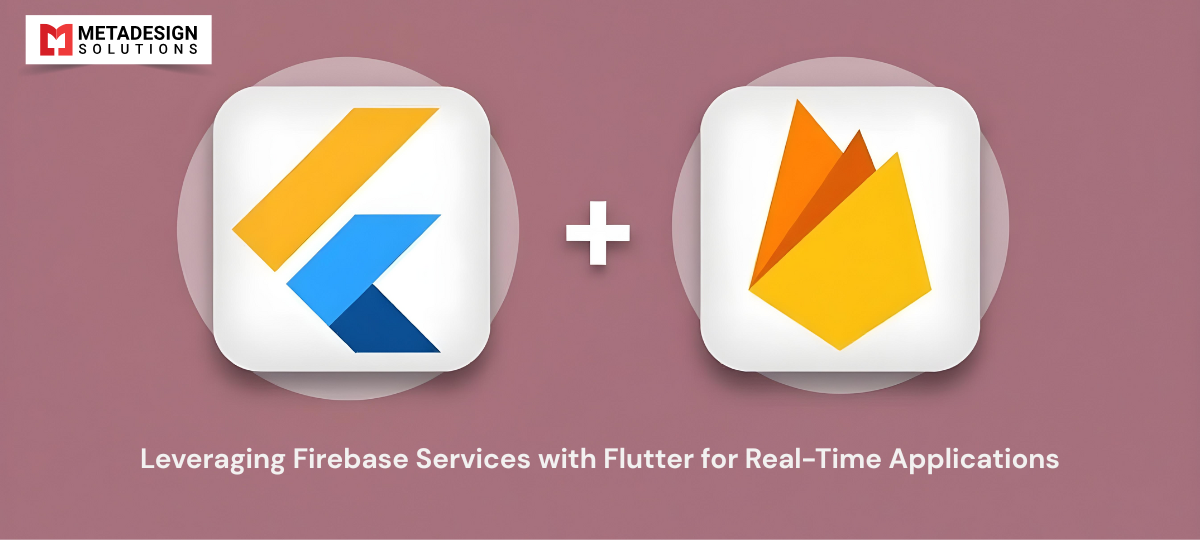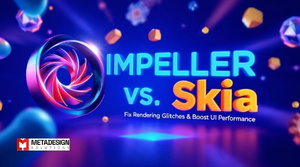State management is a crucial aspect of Flutter app development services. Choosing the right approach can significantly impact your app’s scalability, maintainability, and performance. Having worked on numerous Flutter projects at MetaDesign Solutions, I’ve gained insights into the strengths and weaknesses of various state management solutions.
In this blog, we’ll dive deep into three popular state management libraries: Provider, Bloc, and Riverpod. We’ll explore their features, use cases, and help you decide which one suits your project’s needs.
Understanding State Management
Before we compare the libraries, let’s briefly understand why state management is essential.
- State: The data that the app needs to display or modify.
- State Management: How the app handles and updates this data across different widgets and screens.
Key Consideration: Efficient state management ensures your app remains responsive and maintains a clean architecture.
The Contenders
1. Provider
Overview:
- Developed by the Flutter team.
- Built on top of InheritedWidgets.
- Lightweight and easy to use.
Pros:
- Simplicity: Great for beginners and small to medium apps.
- Community Support: Officially recommended, with extensive documentation.
Cons:
- Boilerplate Code: Can become verbose in complex scenarios.
- Scalability: May not be ideal for large-scale apps requiring more structured architecture.
Example:
dart code
class Counter with ChangeNotifier {
int value = 0;
void increment() {
value++;
notifyListeners();
}
}
// Providing the state
ChangeNotifierProvider(
create: (context) => Counter(),
child: MyApp(),
);
// Consuming the state
Consumer<Counter>(
builder: (context, counter, child) => Text('${counter.value}'),
);
Build Real-Time Flutter Apps with Firebase
Create seamless, real-time experiences with Firebase and Flutter. Book a consultation to explore how we can help you integrate Firebase services for data synchronization, user authentication, and scalable performance in your Flutter app.
2. Bloc (Business Logic Component)
Overview:
- Based on the concept of Streams and Sinks.
- Promotes separation of business logic from UI.
Pros:
- Testability: Easy to write unit tests for the business logic.
- Scalability: Suitable for large applications with complex state.
Cons:
- Steeper Learning Curve: Concepts like Streams can be challenging for beginners.
- Boilerplate: Requires more code to set up events and states.
Example:
dart code:
// Defining events and states
abstract class CounterEvent {}
class Increment extends CounterEvent {}
class CounterState {
final int value;
CounterState(this.value);
}
// Bloc implementation
class CounterBloc extends Bloc<CounterEvent, CounterState> {
CounterBloc() : super(CounterState(0));
@override
Stream<CounterState> mapEventToState(CounterEvent event) async* {
if (event is Increment) {
yield CounterState(state.value + 1);
}
}
}
// Providing the bloc
BlocProvider(
create: (context) => CounterBloc(),
child: MyApp(),
);
// Consuming the bloc
BlocBuilder<CounterBloc, CounterState>(
builder: (context, state) => Text('${state.value}'),
);
3. Riverpod
Overview:
- A rewrite of Provider with improvements.
- Removes limitations of Provider, such as context restrictions.
Pros:
- Flexibility: Can be used anywhere without BuildContext.
- Compile-Time Safety: Catches errors at compile-time.
- Testability: Easier to test due to its decoupled nature.
Cons:
- Newer Library: Less mature than Provider or Bloc.
- Learning Curve: Different concepts may require time to grasp.
Example:
dart code:
final counterProvider = StateProvider((ref) => 0);
// Consuming the state
Consumer(
builder: (context, watch, child) {
final count = watch(counterProvider).state;
return Text('$count');
},
);
// Updating the state
context.read(counterProvider).state++;
Comparing the Libraries
| Feature | Provider | Bloc | Riverpod |
| Learning Curve | Easy | Moderate to Hard | Moderate |
| Boilerplate | Low to Moderate | High | Low |
| Performance | Good | Excellent | Excellent |
| Scalability | Moderate | High | High |
| Testability | Moderate | High | High |
| Community Support | Strong | Strong | Growing |
Which One Should You Choose?
Choose Provider if:
- You’re building a small to medium-sized app.
- You prefer simplicity and minimal boilerplate.
- You’re new to Flutter and state management.
Choose Bloc if:
- You’re working on a large application with complex state.
- You need a clear separation of business logic and UI.
- You require high testability and scalability.
Choose Riverpod if:
- You want the benefits of Provider without its limitations.
- You need flexibility and compile-time safety.
- You’re comfortable exploring a newer library.
Real-World Experience at MetaDesign Solutions
Case Study 1: For a startup needing a simple e-commerce app, we used Provider due to its simplicity and quick setup, allowing for rapid development.
Case Study 2: In a large-scale fintech application with complex state management needs, we opted for Bloc, which provided a robust and testable architecture.
Case Study 3: For an innovative IoT project requiring flexibility and extensive testing, Riverpod proved to be the ideal choice.
How MetaDesign Solutions Can Assist You
Choosing the right state management approach can be challenging. Our team at MetaDesign Solutions offers:
- Consultation: Assessing your project needs to recommend the best state management solution.
- Development Services: Implementing your app using best practices.
- Code Reviews: Enhancing your existing app’s architecture and performance.
Why Partner With Us:
- Experienced Developers: Proficient in all major state management libraries.
- Customized Solutions: Tailored approaches to suit your project’s requirements.
- Commitment to Quality: Ensuring scalable and maintainable codebases.
Get in Touch
Ready to build a high-quality Flutter app with the right state management solution?
Contact us at sales@metadesignsolutions.com to discuss how we can help.
Related Keyphrase:
#Firebase #FlutterDev #RealtimeApps #FlutterFirebase #MobileAppDevelopment #FirebaseForFlutter #RealTimeApps #FlutterDevelopment #FirebaseIntegration #FlutterAppDevelopment #AppDevelopment #FirebaseServices #FlutterRealtime #FirebaseCloud #MobileAppSolutions #AppDevelopmentTools #FlutterCommunity #RealtimeData #FirebaseFeatures #FlutterExperts #MobileTech



